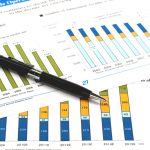Investing.com– Oil prices sank in Asian trade on Wednesday as traders continued to lock-in profits before a closely-watched Federal Reserve interest rate decision, although signs of another draw in U.S. inventories still pointed to tight markets.
Prices saw a measure of profit taking on Tuesday after briefly racing to their highest levels in 10 months, as recent, deeper-than-expected supply cuts by Saudi Arabia and Russia pointed to substantially tighter oil markets in the remainder of the year.
Signs of a bigger-than-expected weekly draw in U.S. inventories furthered expectations of tighter markets, although gasoline inventories were seen rising again, signaling that fuel demand in the world’s largest oil consumer may be cooling after a summer peak.
fell 0.9% to $93.50 a barrel, while fell 0.8% to $89.75 a barrel by 01:06 ET (05:06 GMT).
Analysts expect oil prices to trade in a range of $90 to $100 a barrel for the remainder of the year.
U.S. inventories seen shrinking in prior week
Data from the (API) showed on late-Tuesday that U.S. crude inventories likely shrank by over 5 million barrels in the week to September 15.
The API data usually heralds a similar trend from government inventory data, which is due later on Wednesday, and is expected to show a draw of 2.7 million barrels.
While U.S. inventories saw a build of nearly 4 million barrels in the week to September 8, they have shrunk more than expected for four of the past five weeks, indicating that U.S. crude markets remain tight.
But the API also reported a weekly build in gasoline inventories, while distillates stockpiles are expected to have shrunk at a slower pace. The readings likely indicate that U.S. fuel demand is cooling with the end of the summer season.
Still, the prospect of tighter markets saw crude prices sitting on a nearly 15% jump over the past three weeks.
Fed rate decision, outlook in focus
The Fed is widely expected to at the conclusion of a two-day meeting later on Wednesday.
But markets remained wary of any potentially hawkish signals from the central bank, especially as U.S. inflation saw a resurgence over the past two months. U.S. interest rates are already at over 20-year highs, which markets fear could stymie economic growth in the coming months, denting oil demand.
Any hawkish signals from the Fed are also likely to boost the dollar, which points to more pressure on oil. The Fed is also widely expected to keep rates higher for longer.
An in China played out largely as expected. The and the are also set to decide on interest rates this week.
Read the full article here




